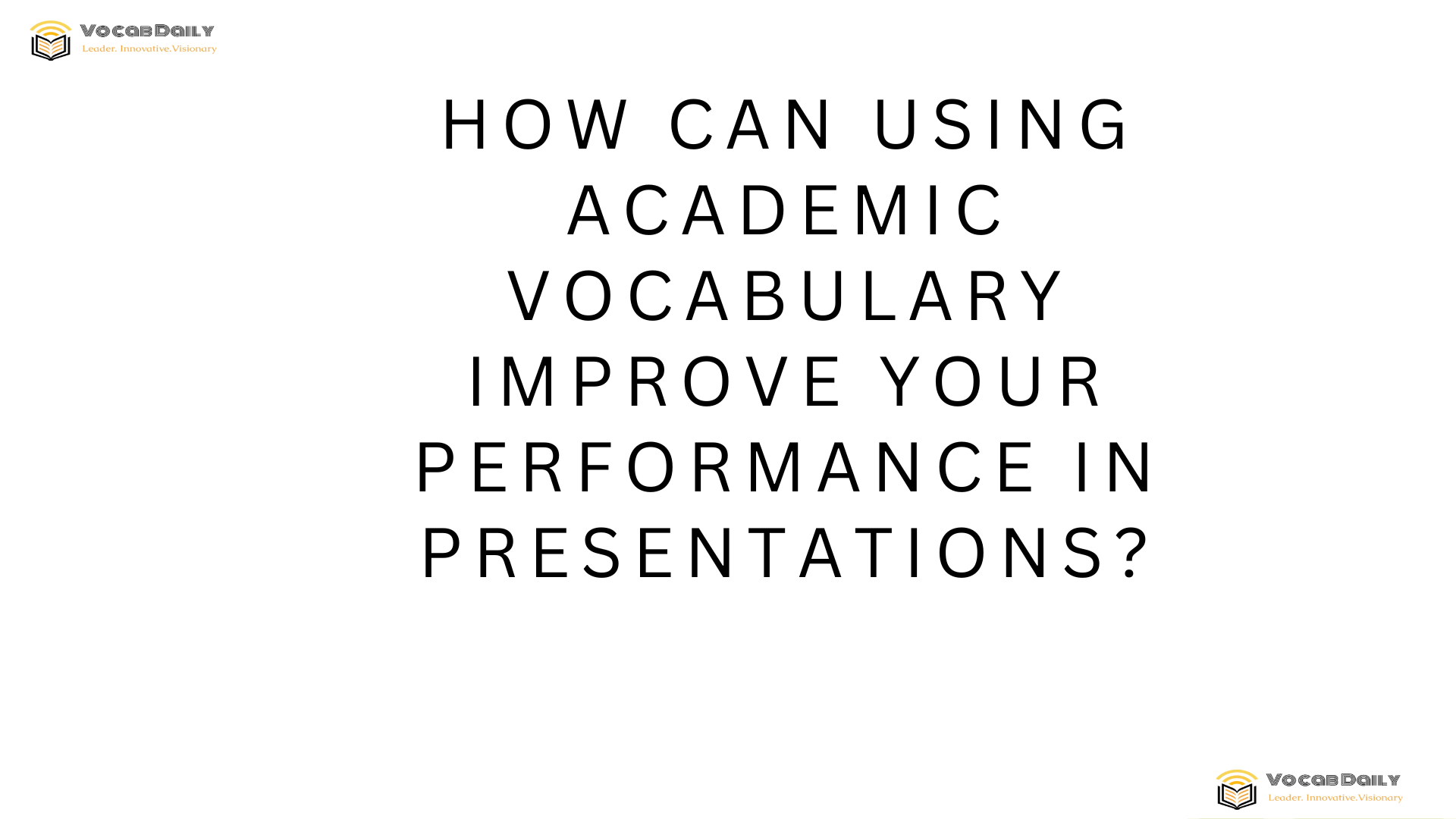How can using academic vocabulary improve your performance in presentations
Enhancing Clarity and Precision
Using academic vocabulary in presentations allows speakers to communicate their ideas with greater clarity and precision. When presenting complex topics, precise language is essential to help the audience understand key points without confusion. Academic vocabulary includes words and phrases that have specific meanings within scholarly and professional contexts. By incorporating these terms, presenters can articulate their arguments clearly and avoid vague or ambiguous statements. This not only helps the audience follow the presentation more easily but also demonstrates the presenter’s depth of knowledge on the subject.
Building Credibility and Professionalism
Incorporating academic vocabulary helps speakers establish credibility with their audience. When presenters use appropriate terminology relevant to their field, it signals expertise and familiarity with the topic. This can increase the audience’s trust in the information being shared. Additionally, professional language reflects well on the presenter’s preparation and dedication, making the presentation appear more polished and serious. Avoiding overly casual or colloquial language is important in academic and formal settings, and using well-chosen vocabulary contributes to a professional tone.
Engaging the Audience Effectively
Academic vocabulary also enhances engagement during presentations. Carefully selected words can capture the audience’s interest by introducing new concepts or emphasizing critical ideas. Using vocabulary that challenges listeners intellectually encourages them to think more deeply about the topic. Moreover, academic words can help create a more dynamic delivery as presenters vary their language to maintain attention. When the audience encounters precise and meaningful terms, it encourages active listening and participation, leading to a more impactful presentation experience.
Improving Organization and Flow
Words often used in academic settings such as transition phrases, connectors, and signposting vocabulary contribute to better organization and flow in presentations. Academic vocabulary includes terms like “furthermore,” “consequently,” “in contrast,” and “therefore,” which help structure information logically. Using these words ensures the presentation progresses smoothly and the audience can follow the sequence of arguments easily. Good organization minimizes misunderstandings and highlights the relationships between ideas, which makes the overall message clearer and more persuasive.
Supporting Complex Ideas with Precision
Presentations, especially in academic or professional environments, often involve explaining complex theories, data, or relationships. Academic vocabulary provides the tools to express these concepts accurately. Terminology specific to a discipline allows presenters to break down sophisticated ideas into understandable parts without oversimplifying. Using the right words can help illustrate nuances and subtleties that simpler expressions might miss. This precision is critical in ensuring the audience fully comprehends the material and values the insights being shared.
Enhancing Persuasiveness and Influence
Another key benefit of using academic vocabulary is that it can strengthen the persuasiveness of a presentation. Carefully chosen words can shape how arguments are perceived, making them more convincing. For example, using terms that imply evidence, validity, or consensus such as “empirical,” “corroborate,” and “consensus” lends authority to claims. In contrast, vague language might weaken the argument. Academic vocabulary can therefore be a powerful tool in influencing an audience’s opinions or encouraging acceptance of a proposal or viewpoint.
Boosting Speaker Confidence
Mastering academic vocabulary can significantly boost a presenter’s confidence. Knowing how to express ideas clearly and appropriately reduces the anxiety of finding the right words during a speech. Confident speakers tend to perform better as they maintain steadier eye contact, use effective body language, and engage with their audience more comfortably. The familiarity with academic terms equips presenters to respond more effectively to questions or discussions, further enhancing their credibility and control during the presentation.
Facilitating Better Audience Understanding
Academic vocabulary can aid audience comprehension by standardizing communication. When presenters use commonly accepted academic terms, they align their language with that of their audience—especially in educational or professional contexts. This common linguistic framework helps reduce misunderstandings and allows the audience to focus on the content rather than deciphering unfamiliar or imprecise wording. Clear, academic vocabulary scaffolds learning and supports the audience in grasping key concepts quickly and accurately.
Encouraging Critical Thinking and Discussion
Using academic vocabulary often introduces terms that carry specific theoretical or conceptual significance. These words can prompt the audience to think critically about the topic being presented. For example, incorporating words like “hypothesis,” “methodology,” “analysis,” and “implications” encourages listeners to consider the reasoning behind conclusions and the processes involved. This kind of vocabulary fosters a deeper level of discussion and promotes intellectual curiosity, making presentations more interactive and thought-provoking.
Supporting Multidisciplinary Communication
Academic vocabulary often transcends individual disciplines, creating a shared language that facilitates communication across various fields. When presenters use standard academic terms, they can connect with diverse audiences who may come from different backgrounds but share an understanding of scholarly language. This can be especially important in interdisciplinary settings, where clear and precise vocabulary bridges gaps between specialties. Such communication supports collaboration, mutual understanding, and the exchange of ideas beyond niche audiences.
Practical Tips for Integrating Academic Vocabulary
To reap these benefits, presenters should actively work on expanding and practicing their academic vocabulary. One helpful approach is to read widely from academic journals, books, and reputable online sources, noting new words and phrases. Creating flashcards or vocabulary lists tailored to specific presentation topics can facilitate retention. Additionally, practicing speeches using academic vocabulary helps speakers become comfortable with these terms and incorporate them naturally during delivery. It is important, however, to balance vocabulary use to avoid sounding artificial or overcomplicated—clarity should always remain a priority.
Also check out VocabDaily workbook collections.

Leave a Reply